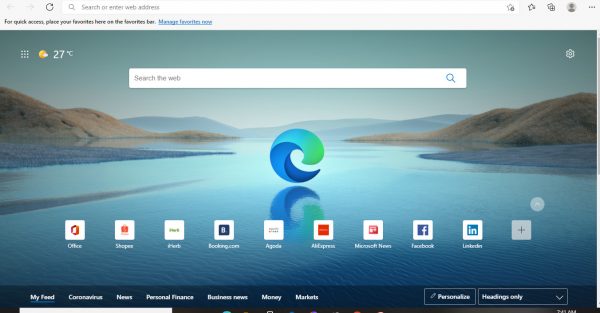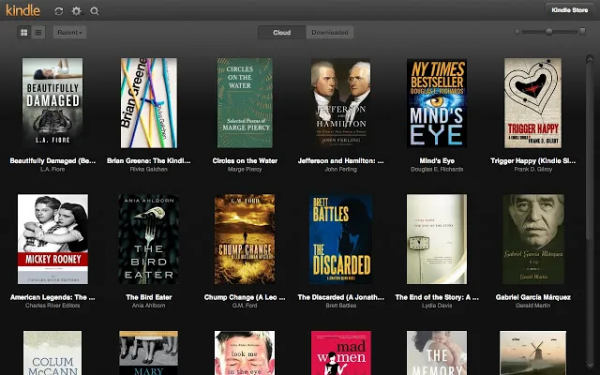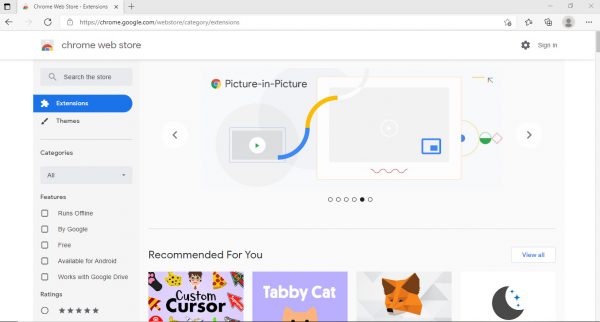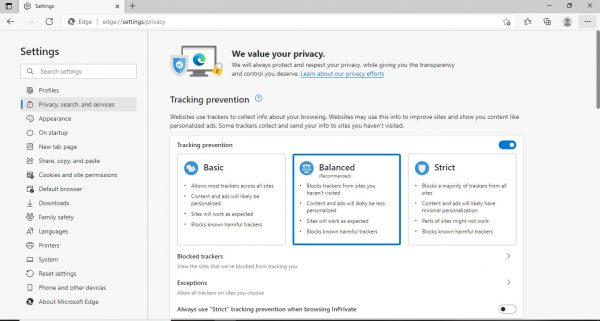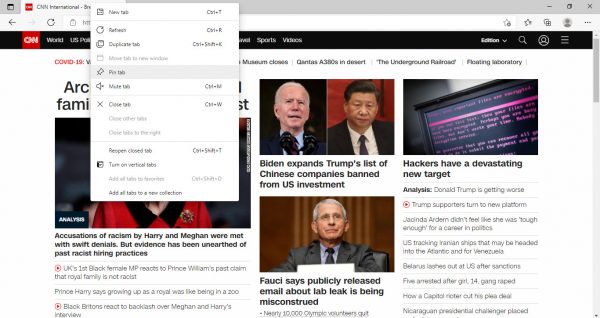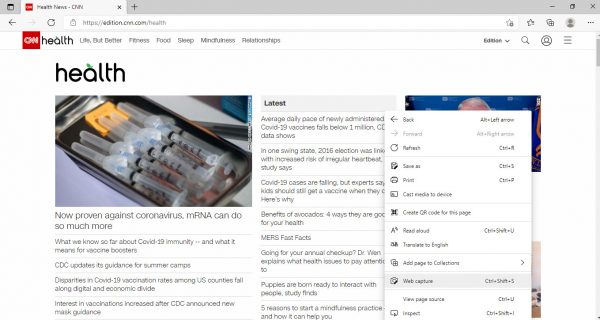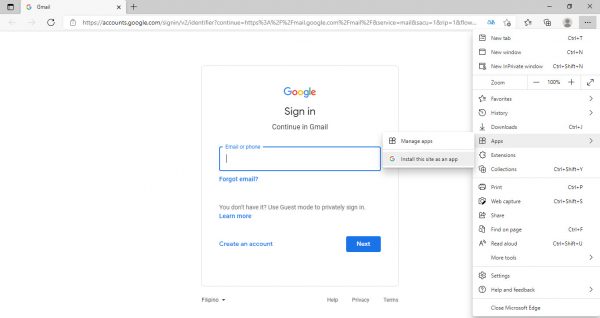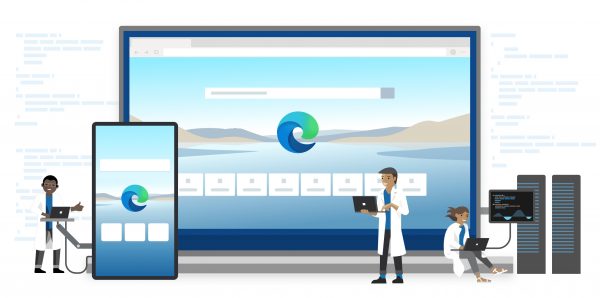This latest version of Edge offers a far safer, faster, more dynamic, and smooth experience compared to its legacy version. In this article, we’ll uncover some of the features that make Edge a much better version of its older self, and why it may be worth making the switch.
What is Microsoft Edge?
Microsoft Edge is a web browser developed by tech giant Microsoft. The company first introduced the web browser back in 2015. At the time, they announced their intention to replace Internet Explorer with Edge. However, they still continued to bundle Internet Explorer with Edge as default apps on Windows 10 devices. This earlier version of the browser ran on Microsoft’s proprietary engine called EdgeHTML. By 2020, Microsoft had released a new version of the web browser. This new version makes use of Chromium as its internal structure instead of EdgeHTML. Currently, the web browser is pre-installed on all Windows 10 devices. It’s also available for download online for devices that have the browser’s older version.
A Brief History of Microsoft Edge
Microsoft Edge is the second web browser to be created by Microsoft. It was preceded by Internet Explorer which was released back in 1995. Internet Explorer was highly popular well into the late 2000s, but the browser would face scrutiny related to security issues. Around the same time, competitors Google and Mozilla would release their take on the web browser, and the public shift their attention to these newer options. The combination of these factors would cause Internet Explorer to slip to the bottom of the browser market ladder, and it never seemed to be able to recover. By 2019, Microsoft announced its plans to rebuild the browser from the ground up. This time they weren’t going to take chances as they planned to use the Chromium codebase as their starting point. Around the same time, they also announced that they will be shutting down Internet Explorer for good. Microsoft released the new version of Edge, officially known as Chromium Edge, in January 2021. This new version replaced EdgeHTML with Chromium as its codebase. A codebase is just a collection of source codes that allows the web browser to implement a wide selection of tasks. This codebase in particular is behind some of the most popular web browsers like Google Chrome, Opera, Brave, and Vivaldi. In any case, the switch to the Chromium codebase was supposed to make Edge faster, safer, and better integrated. It also allowed Edge to view legacy websites, which was not possible with the older Edge.
A Review of the Microsoft Edge Features
The new version of Microsoft Edge is being marketed as a faster, more efficient version of its old self. Besides that, the browser also promises an exciting set of new features that users will find both useful and novel. Allow us to list down some of these features that make Microsoft Edge stand out, so you can see for yourself how they compare to Google Chrome.
Compatibility and Setup
Microsoft Edge is a free web browser designed to fit into Windows devices. It’s directly compatible with devices that run on Windows 7 or later. Its also compatible with newer versions of Android, macOS, and iOS. Most Windows 10 devices already arrive with Microsoft Edge pre-installed. However, chances are the version installed on your computer is the older version. If you purchased your device before the release of Chromium Microsoft Edge, chances are that the pre-installed Edge on your device is the older version. In that case, you will have to download the new version from the Microsoft app store. This program should recognize that you have Microsoft Edge already installed, and it will simply update your browser to the latest version. Regardless, the installation process should be just as easy as straightforward as can be. Just follow the walkthrough installation process, which takes less than ten minutes to complete. There’s just one catch with Microsoft Edge: if you have Microsoft Edge installed by default on your device, then you won’t be able to uninstall it. You can certainly unpin it from your taskbar or move it around, but there is no option to remove it completely. Not to worry, though, since you can always install any other browser that you want and then set that as your default browser.
User Interface
Microsoft Edge has a lot of similarities with Google Chrome on the design front. First off, it makes use of a minimalist design with a monotone background and tabs that are simply squared off. Even the icons are designed with minimalism in mind, as they don’t have many colors. The browser also doesn’t offer theme options natively, but you can download a lot of themes from the Microsoft Edge Add-ons store, among other stores. There’s also an option to change your theme to light or dark modes. Edge makes use of a singular search box that functions both as an address bar and search bar. You can key in anything you want to search, whether a title, keyword, or website address. Beside the Omnibox, you’ll find the Reading Mode, Favorites or Reading List, and Web Notes. There’s also a three-dotted symbol which leads to additional settings. On the opposite end are tab-related buttons. The first button lets you pin browser tabs to the Taskbar or Start Menu. The button next to it lets you set aside open tabs for later use. Just to note, the browser will remember the tabs that you set aside and then open them up once you get back to the browser. The tabs also reflect a speaker icon whenever it plays an audio or video. The default Home page shows a lot of helpful information such as the daily news, weather updates, reading list items, and more. You can also add a Home button to the main toolbar. When you right-click on the Back arrow, you’ll see the last ten pages viewed on the current tab.
Sidebar Search
Do you sometimes encounter a term online and want to look it up? Then the sidebar search feature may be the right solution for you. This feature allows you to search for the meaning of words or terms without leaving your web page. The search query is processed using ing by default. At this point, you might think, well, you still have to shift to another tab to view the results, right? In reality, the results show up on the right side of the page, so there’s really no need. The search results should include a snippet from a web page trying to answer your query directly. And just like with any other web searches, there should be web links, images and videos also linked to the query. To use sidebar search, simply highlight a word, right-click on it, and then select “Search in sidebar.”
Books in Edge
Microsoft has its own e-book reader as well. Fans of the older Microsoft Edge know that the browser has always been able to read PDFs but not e-books. This new feature allows users to read not only PDF files but also e-books of different file formats. The e-book reader quickly links up to the Microsoft Store. The store already features a decent collection of e-books ranging from science fiction books to classics. Of course, it would be ridiculous to suggest that you will only be able to read e-books that you’ve purchased from the store. In truth, the e-reader works with practically any other e-book saved elsewhere on your computer. To view an e-book in Edge, you simply need to right-click on the file and then select Edge to open the file. Another way to go about reading e-books is to set Edge as the default reader for your e-book files. There’s also a lot that you can do with the Edge e-book reader. First off, it tells you how far along you are in the text with a percentage indicator. You can swipe the pages left to right to navigate through them. You can also zoom in and out of pages to view notes or illustrations up close. The feature also makes it possible to change fonts for the text, set bookmarks, view the table of contents. You can search for specific words in the e-book or look up words over the internet with Cortana’s help. Another delightful feature pairs up the e-reader with Reading Mode. This integration will allow you to instruct Edge to read out the e-books for you. Not only that, you can choose from a variety of voice types and adjust speeds as you please.
Google Extensions
One of the major complaints that most users had with the Legacy Edge was that it did not have enough support for extensions. For those who don’t know, extensions are smaller versions of applications that extend the functionality of a web browser. Using these programs, you can power up your browser to handle different tasks. In any case, the original Edge didn’t do so well on its extensions, and that flaw most likely contributed to its lack of popularity. However, this latest version makes up for that mistake by making itself compatible with apps available on both the Microsoft app store and the Chrome Web Store. While the Windows app store has a limited offering (approx. 71 apps in total), you can rest assured that the apps available are of high quality. On the other hand, you have the Chrome Web Store, which has the largest collection of apps on the market today. While you are not likely to run out of choices, you might find it hard to pick apart the apps in terms of quality. Nevertheless, don’t let this discourage you from trying out new apps. In fact, there are a few really amazing Google extensions that you can get for Edge. Read Also: Best Google Chrome extensions to help you stay organized. Extensions will not appear on the toolbar by default. Microsoft tucked away from the extensions under the overflow menu to the top-right corner of the browser. Another way to open the extensions is to right-click on a page to see the extension’s icon. For extensions that you use on a daily basis, you can have them pinned right next to the address bar. Just go to the Settings option of the extension and then select the “Show button next to address bar.”
Tracking Prevention
Most people prioritize privacy in their web browsers, and Microsoft knows this. This is why they came up with a new feature for Edge called tracking prevention. For those who don’t know, most websites nowadays use trackers. Trackers are hidden scripts that websites use to collect information about your preferences and engagement with the site. They essentially use that information to generate website stats or sometimes personalized ads. Sometimes, these trackers collect more than they should. They go for your IP address, location, or browser information, which puts you at risk. The way tracking prevention works is that it blocks trackers from websites online. It also scans for known trackers wherever you go on the internet and blocks those trackers. It will also prevent known harmful trackers too. There are three layers of tracking protection. The first level will allow all websites to track you, whereas the third level will block all trackers. The second layer blocks what they call third-party trackers. These trackers are the ones that come from websites that you haven’t visited. Microsoft sets the default security settings to the second layer for tracking prevention. Microsoft also made sure that its users can customize the feature. There are two types of lists that you can populate with URLs. The first is the blocked list for sites you don’t want tracking you, and the other is the exceptions list for sites whose cookies you want to allow. You also have the option to remove specific data every time you close the browser. While Edge can hardly be named the most secure browser, they are certainly on the right track with this one.
Pin Tabs to Edge or Taskbar
Pin Tabs to Edge or Taskbar is another lesser-known but equally useful feature. This feature allows you to keep one or more websites permanently open on a tab while you’re browsing on the web. The pinned tab will always appear to the left of all other tabs that you open. You can also pin the tab to your taskbar, in which case you’ll have a shortcut to it always available. Pinned tabs appear smaller than the other tabs, to help you maximize the tab space to accommodate as many tabs as you need. This feature is just another creative way to keep tabs on the websites you use daily. It’s a lot like pinning down a website under Favorites. But the main difference is that the website is always open on your browser. If you want to pin a tab. Simply right-click on the tab and then select “Pin tab.” Any tabs that you’ve pinned can be unpinned through the same process.
Web Capture
The Web Capture tool is Microsoft’s take on the native screenshot feature on most devices. This feature lets you take a screenshot of a section of a page or an entire page to save as a picture. Unlike other screenshot tools, you can add captions, comments, or highlights to the screenshot. To access Web Capture, simply right-click on any portion of a web page and select “Web capture.” At this point, you’ll have two options: free-select or full page. For the free select option, you will need to drag and drop the lighted box over the section that you want to capture. For the full page option, the program automatically screen capture the page in full. At this point, you can copy these screenshots to your clipboard. Or you can edit it through the Web Capture’s tool editor. From there, you can use add colorful marks to the screenshot using basic paint tools. You can save the screenshot as a photo or PDF file after you finish editing. The feature also works for other devices that run on Windows 10, like Android or IOS. You can even take a screenshot of your Apple Watch if it has the latest version of Microsoft Edge.
Collections
Collections is another novel feature to grace the halls of Edge features. This feature gives users a space to compile information from the web, research style. This feature is super useful when you need to conduct research on a particular topic while having a lot of online resources to consider. It also comes in handy for keeping tabs on your favorite websites and hobbies. A collection is essentially just a folder stored on the collections tab. Each collection should have a label or category (i.e., Recipes or Sports News). Once you have a dedicated folder, you can start populating the collection with web pages, images, videos, and snippets of text. You can also add your own notes and drop them into the mix. The contents of each collection should be visible through a panel on the right side of the browser. The entries will appear in chronological order, but you can rearrange them. The Collections feature appears as an icon on the top-right corner of the browser window. The Collections icon is essentially a black square shape with a white cross in the middle. This icon is located between the Favorites and User Profile icons on the browser. All of your collections automatically sync to the Windows cloud. This means you can access Collections from practically any other device. That is of course on the condition that you’re signed in to your Microsoft account. There’s even an option to import your Collections straight to Excel and Word. The Collections feature is also visibly similar to the Favorites feature. Just like Favorites, you get to keep URL links to web pages you find interesting. However, the difference with Collections is that you are not limited to storing URL links. You also get to keep text snippets, photos, and videos.
Progressive Web Apps (PWA)
One of the more novel features on Edge is the ability to install websites as native apps. This feature will help you stay connected to websites that you visit on a regular basis. Installing a website as an app will provide you with a shortcut to the website on your desktop or taskbar. You simply need to click on the shortcut to get instant access to the website. While the feature is limited in function at present, Microsoft still intends to improve it over time. In the future, each web app might come with additional capabilities. That may include offline accessibility, push notifications, quick installs, and more. There’s also the question about which websites can be turned into web apps. According to Microsoft, pretty much any website can be turned into a web app.
Immersive Reader
Immersive Reader is another very practical and interesting feature to grace Microsoft Edge. This feature does two things: simplifying web pages and reading web page text aloud. The first sub-feature lets you dress down web pages to what matters most-content. It removes distracting elements on a page such as sidebars, ads, comments, and more. On top of that, you also get to choose your reading view style and the font size for the simplified page. By enabling this mode, you should be able to see only the contents of the page that is important. Read Aloud is the other sub-feature to Immersive Reader. This feature allows Cortana, or any variation of Cortana, to read text aloud. To make this feature work, you simply need to highlight text from any web page. Then you’ll need to right-click on the text and then select the “Read aloud from here” option. A special button called “Voice options” will become visible on the upper-right corner of the web page. This button opens up to a selection of voices to read the text, plus a slider for adjusting the speed of the reading.
Final Thoughts on the Microsoft Edge
Microsoft Edge has always suffered from its long-held reputation as an underperformer. Users complained about its subpar library of extensions and the lack of syncing capabilities. They also complained that the features were uninteresting or unoriginal. Add to that the stigma of being the successor to Internet Explorer. But Microsoft just never gave up and rebuilt the browser from the ground up using Chromium. This would prove to be a very wise decision on the part of Microsoft, and little did they know that that decision would become a turning point for the browser. Judging by the current state of things, Microsoft Edge is finally ready to go head-to-head with Google Chrome. Technically, it’s going to be a battle between cousins with plenty of similarities between them. But if you’d like to really dive in on the issue, here’s a comparative analysis of Microsoft Edge and Chrome.



